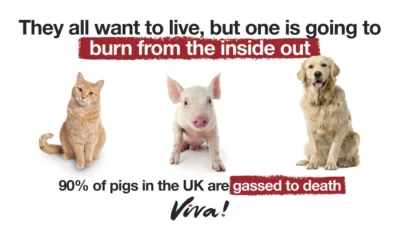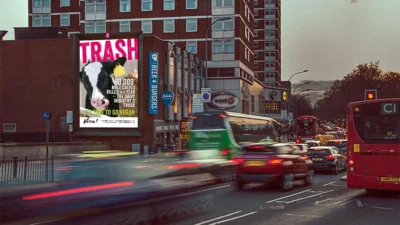Squirrel Culling in the UK
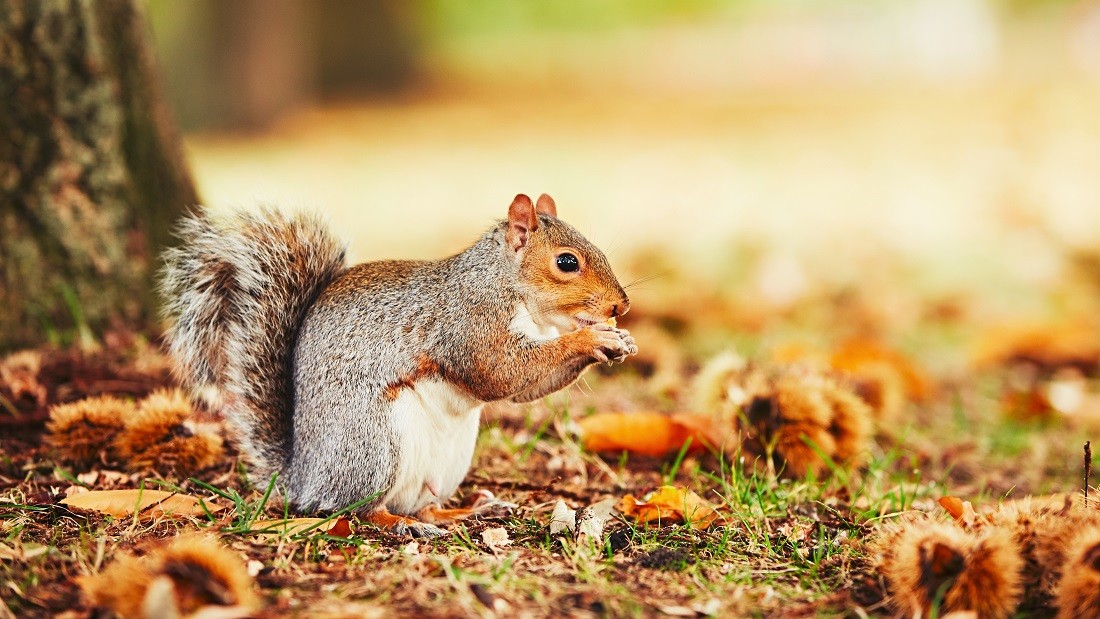
- Squirrels will deceive potential thieves to protect their food stores. They pretend to bury nuts and while the potential thief focuses on this the squirrel nips off and buries the real nuts elsewhere and spread leaves over the spot to disguise their treasure – a rare form of animal intelligence and cunning.1Derbyshire, D., 2008. ‘Cunning squirrels make bogus burials of ‘nuts and seeds’ to fool onlookers.’ Daily Mail. Available at https://www.dailymail.co.uk/news/article-508696/Cunning-squirrels-make-bogus-burials-nuts-seeds-fool-onlookers.html [Accessed 17 July 2020].
- Squirrels think ahead, burying up to 15,000 nuts in summer in preparation for winter.2Bryce, E., 2018. ‘How Do Squirrels Remember Where They Buried Their Nuts?’ Live Science. Available at https://www.livescience.com/64104-how-do-squirrels-find-buried-nuts.html [Accessed 17 July 2020]. They arrange their food into groups of different nut types and bury them together. It’s a memory tactic known as ‘chunking’ and it must work because they retrieve about 95 per cent of their stash, even in snowy winters when the smell of the nuts is masked. It is a sign of extraordinary memory and intelligence.2Bryce, E., 2018. ‘How Do Squirrels Remember Where They Buried Their Nuts?’ Live Science. Available at https://www.livescience.com/64104-how-do-squirrels-find-buried-nuts.html [Accessed 17 July 2020].
- There are 44 types of ‘flying squirrel’. They use a membrane that stretches between their four legs and their body, making them look like an envelope but with a head and tail. It enables them to glide from tree to tree at speeds of up to 30 miles per hour.3Kernan, M., 2001. ‘How Squirrels Fly.’ Smithsonian Magazine. Available at https://www.smithsonianmag.com/science-nature/how-squirrels-fly-37372905/ [Accessed 17 July 2020]. Sky divers’ wingsuits are based on it.
- Three species of flying squirrel glow pink in ultraviolet rays, the only mammals known to do this.4National Geographic. ‘Flying squirrels secretly glow pink, thanks to fluorescence.’ National Geographic. Available at https://www.nationalgeographic.com/animals/2019/01/flying-squirrels-fluorescent-secretly-glow-pink/ [Accessed 17 July 2020]. Scientists aren’t sure why but the most likely answer is that the pink colour confuses predators who glow in precisely the same hue, disguising the flying squirrel as an owl.
- There are more than 200 types of squirrel with many variations.5National Geographic. ‘Squirrels.’ National Geographic. Available at https://www.nationalgeographic.com/animals/mammals/group/squirrels/ [Accessed 17 July 2020]. The African pygmy is the smallest squirrel at up to 10 centimetres in length and weighing just 10 grams.6Bradford, A., 2014. ‘Squirrels: Diet, Habit & Other Facts.’ Live Science. Available at https://www.livescience.com/28182-squirrels.html [Accessed 17 July 2020]. The Indian giant squirrel is the largest at up to a metre in length and weighing as much as two kilograms.6Bradford, A., 2014. ‘Squirrels: Diet, Habit & Other Facts.’ Live Science. Available at https://www.livescience.com/28182-squirrels.html [Accessed 17 July 2020].
- Mother squirrels are dutiful and caring and make multiple nests to use as backups.7Guess, J., 2020. ‘The Squirrels Are Coming.’ California Wildlife Center. Available at https://cawildlife.org/terrestrial/the-squirrels-are-coming/ [Accessed 17 July 2020]. If the primary home is under threat by predators or fires, she will carry all her young to the safety of the secondary home. Mothers will also adopt orphaned baby squirrels, who are known as kittens.8McAdam, A., 2010. ‘Squirrels show softer side by adopting orphans, study finds.’ University of Guelph. Available at https://www.sciencedaily.com/releases/2010/06/100601114631.htm [Accessed 17 July 2020].
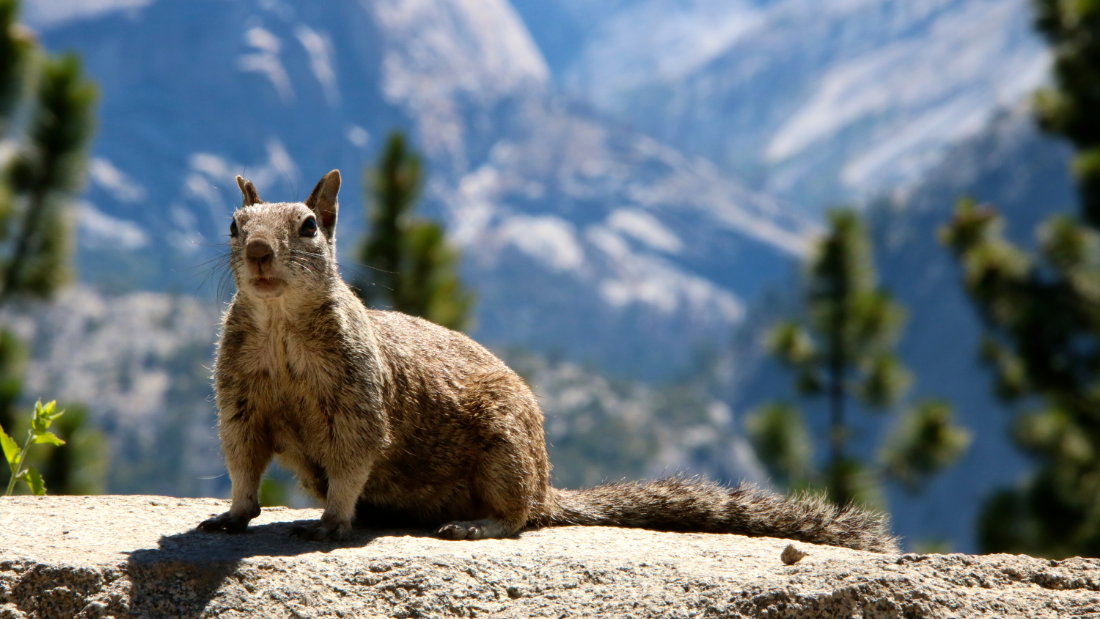
Grey squirrels were brought over to Victorian Britain from North America as an ornamental species to ‘decorate’ the lawns of the aristocracy. These smart and adaptable animals didn’t hang around and can now be seen in woodlands, parks and gardens across the entire country. Although native Americans, the UK has provided a perfect habitat, with lots of food to their liking – nuts, acorns, tree seeds, flowers, buds and pinecones. They also eat small animals such as insects and caterpillars.1National Geographic. ‘Squirrels.’ National Geographic. Available at https://www.nationalgeographic.com/animals/mammals/group/squirrels/ [Accessed 17 July 2020].
The pine marten is a skilled predator of grey squirrels and was once the second most common carnivore in Britain but humans have decimated them, allowing grey populations to boom.2Vincent Wildlife Trust. ‘Pine Marten.’ Vincent Wildlife Trust. Available at https://www.vwt.org.uk/species/pine-marten/ [Accessed 17 July 2020]. Owls sometimes hunt squirrels when times are hard but grey squirrels have few predators in the UK.3Wildlife Online. ‘Squirrel Predators.’ Wildlife Online. Available at https://www.wildlifeonline.me.uk/animals/article/squirrel-predators [Accessed 17 July 2020]. Cats, dogs, foxes, minks and stoats will all try to catch squirrels but not enough to threaten their numbers. In North America it’s a different story, with coyotes, snakes, bobcats and raccoons all hunting squirrels.3Wildlife Online. ‘Squirrel Predators.’ Wildlife Online. Available at https://www.wildlifeonline.me.uk/animals/article/squirrel-predators [Accessed 17 July 2020]. The main reason for grey squirrel mortality in the UK is food scarcity when seed crops fail.
Buzzards and goshawks are squirrel eaters but they go for the easier-to-catch red squirrels who spend most of their time in trees while greys spend more time on the ground.3Wildlife Online. ‘Squirrel Predators.’ Wildlife Online. Available at https://www.wildlifeonline.me.uk/animals/article/squirrel-predators [Accessed 17 July 2020].
The greys’ success has come about at the same time as red squirrel numbers have declined. There are now an estimated 2.5 million grey squirrels and just 140,000 red squirrels across the UK.4The Wildlife Trusts. ‘Red Squirrels.’ The Wildlife Trusts. Available at https://www.wildlifetrusts.org/saving-species/red-squirrels#:~:text=Populations%20are%20currently%20estimated%20at,and%202.5%20million%20grey%20squirrels. [Accessed 17 July 2020]. Many people have seen a cause and effect correlation here and the ‘guilty’ greys have been targeted in brutal culls in a misguided attempt to boost red squirrel numbers.
Greys are culled even in areas where reds don’t exist, all in the name of ‘woodland management’. And, of course, money’s involved. If you’re a landowner, the Government will give you £100 per hectare if you undertake to kill grey squirrels, even if there isn’t a red squirrel within 100 miles.5Gov.uk, 2015. ‘WD2: Woodland improvement.’ Rural Payments Agency, Natural England. 2 April. Available at https://www.gov.uk/countryside-stewardship-grants/woodland-improvement-wd2 [Accessed 17 July 2020].
The bird-shooting industry is also keen to kill greys because they eat a bit of the grain laid down to keep pheasants in one area until shooting season begins. The irony is astounding – the shooting industry claims that they kill grey squirrels because they’re not native and yet they release over 57 million non-native pheasants (mostly) every year into Britain’s countryside, many of whom go on to cause damage to native wildlife.6Weston, P., 2020. ‘Defra challenged over ‘unlawful’ release of 57m game birds in UK.’ The Guardian. 26 February. Available at https://www.theguardian.com/environment/2020/feb/26/defra-challenged-over-unlawful-release-of-57m-game-birds-in-uk [Accessed 17 July 2020]. The bird shooting industry doesn’t just kill squirrels but also foxes, hedgehogs, birds of prey or anything else they think might snaffle pheasant eggs or chicks – often when it’s illegal to do so!7Natural England, 2016. ‘Issue of buzzard licence.’ Natural England. 5 August. Available at https://www.gov.uk/government/news/issue-of-buzzard-licence [Accessed 17 July 2020]. It’s an industry based entirely upon killing and should have no authority to talk about culling grey squirrels as conservation.
The timber industry also wants to see grey squirrels eradicated because they cause a bit of damage to trees. Half of all ancient woodlands have been destroyed since the end of World War Two, not because of grey squirrels but us. Any damage by grey squirrels is tiny in comparison to the destruction of trees at our hands.8Vidal, J., 2008. ‘The UK’s ancient woodland is being lost ‘faster than Amazon.’ The Guardian. 21 October. Available at https://www.theguardian.com/environment/2008/oct/21/forests-conservation [Accessed 17 July 2020]. It has helped to make Britain is one of the ‘most nature-depleted countries in the world’ and has damaged many species along with red squirrels.9Johnston, I., 2016. ‘UK one of ‘least natural countries in the world’ with one in seven species facing extinction.’ The Independent. 14 September. Available at https://www.theguardian.com/environment/2008/oct/21/forests-conservation [Accessed 17 July 2020]. We blame grey squirrels for our own vandalism.
Landowners, timber owners and bird shooters are all up in arms against the greys, quite literally, in the name of protecting the native red squirrel. Some conservationist charities such as The Wildlife Trusts have joined the onslaught, helping to perpetuate the myth that killing grey squirrels helps red squirrels with no evidence that the cull actually works.10Silverman, R., 2015. ‘Millions of pounds of public money to pay for grey squirrel cull.’ The Telegraph. 3 January. Available at https://www.telegraph.co.uk/news/earth/wildlife/11301638/Millions-of-pounds-of-public-money-to-pay-for-grey-squirrel-cull.html [Accessed 17 July 2020].
Are greys responsible?
Long before greys even landed in Britain, red squirrels were on the decline. These little animals were struggling with deforestation, disease, harsh winters and – ironically given our professed love of them today – hunting. Before we decided that grey squirrels were the problem, red squirrels were the ‘pests’, with squirrel bounty clubs set up around the country to kill them. The Highland Squirrel Club alone killed more than 100,000 reds between 1903 and 1941.1Highland Archive Centre. ‘Highland Squirrel Club Report for 1941’ Ambaile Highland History and Culture. Available at https://www.ambaile.org.uk/detail/en/5278/1/EN5278-highland-squirrel.htm [Accessed 17 July 2020].
Red squirrels have been dropping in number not just from hunting but because we have been destroying their homes with mass deforestation.2Vidal, J., 2008. ‘The UK’s ancient woodland is being lost ‘faster than Amazon.’ The Guardian. 21 October. Available at https://www.theguardian.com/environment/2008/oct/21/forests-conservation [Accessed 17 July 2020]. The rise of grey squirrel populations does not necessarily correlate with the drop in red squirrels. In the 1950s, there were millions of reds when greys were already well established. Now, there are only 140,000 reds left.3The Wildlife Trusts. ‘Red Squirrels.’ The Wildlife Trusts. Available at https://www.wildlifetrusts.org/saving-species/red-squirrels#:~:text=Populations%20are%20currently%20estimated%20at,and%202.5%20million%20grey%20squirrels. [Accessed 17 July 2020]. The culprit is loss of habitat, which greys have managed to adapt better to.
Red squirrels have gone from being pests to a symbol of Britain’s wildlife when people decided their pointy ears, little hands and lovely fur were cute. It obscures the fact that we have driven their numbers into the ground.
Instead of leaving nature alone, the hatred that was harboured towards reds has been transferred to greys. It’s similar to the way cattle farmers wrongly blame badgers for bovine tuberculosis (bTB) – leading to 100,000 badgers being killed, millions of pounds of taxpayers’ money wasted and barely any reduction in bTB. One cull follows another despite their being little evidence to support culling as a means of managing populations.4Harris, S., Soulsbury, C., Iossa, G., 2008. University of Bristol. Available at https://onekindplanet.org/uploads/publications/0811_grey_squirrel_populations.pdf [Accessed 17 July 2020]. In fact, culls can increase localised density of grey squirrels!4Harris, S., Soulsbury, C., Iossa, G., 2008. University of Bristol. Available at https://onekindplanet.org/uploads/publications/0811_grey_squirrel_populations.pdf [Accessed 17 July 2020].
Do greys harm reds?
Greys are hardier squirrels than reds, weighing almost twice as much and have adapted to modern Britain far more effectively than native reds, who have failed to thrive in our deforested, urban country. You can see in our urban environments and concrete cities that grey squirrels have managed to thrive. It’s not their fault that reds have been unable to do the same.
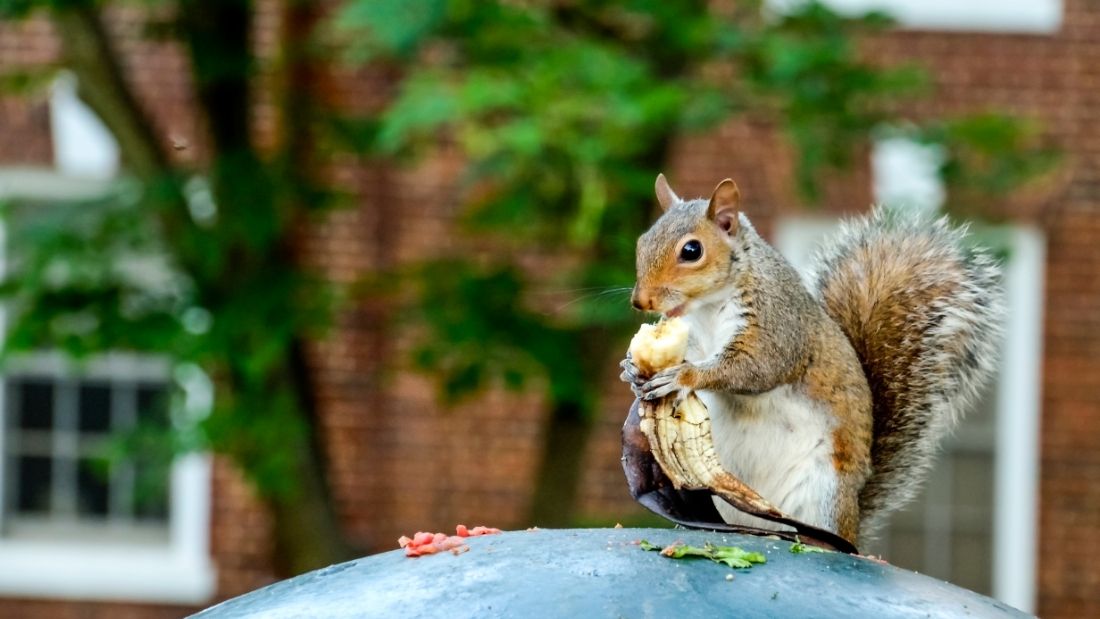
Contrary to popular belief, grey squirrels do not attack or chase reds from their homes. But when they do live side-by-side, greys are far more effective at finding available food sources and reds suffer as a result.
The squirrel pox virus that some grey squirrels carry is touted as the main reason for red squirrel decline. It’s a disease which is benign in grey squirrels but can spread to reds and become fatal. A small number of reds have been shown to develop immunity to the pox, providing hope that the two species could live more easily with each other in the future.5Focusing On Wildlife, 2014. ‘Grey Squirrels versus Red Squirrels – The Facts.’ Focusing On Wildlife. 12 November. Available at https://focusingonwildlife.com/news/gray-squirrels-versus-red-squirrels-the-facts/ [Accessed 17 July 2020].
The pox certainly has played a part in lowering the red squirrel population but far too much emphasis has been put on this one reason in a dogged attempt to eradicate human guilt from the problem. The money spent on ineffective, expensive and cruel culls would be far better spent on finding a vaccination against squirrel pox rather than encouraging endless and pointless culls.
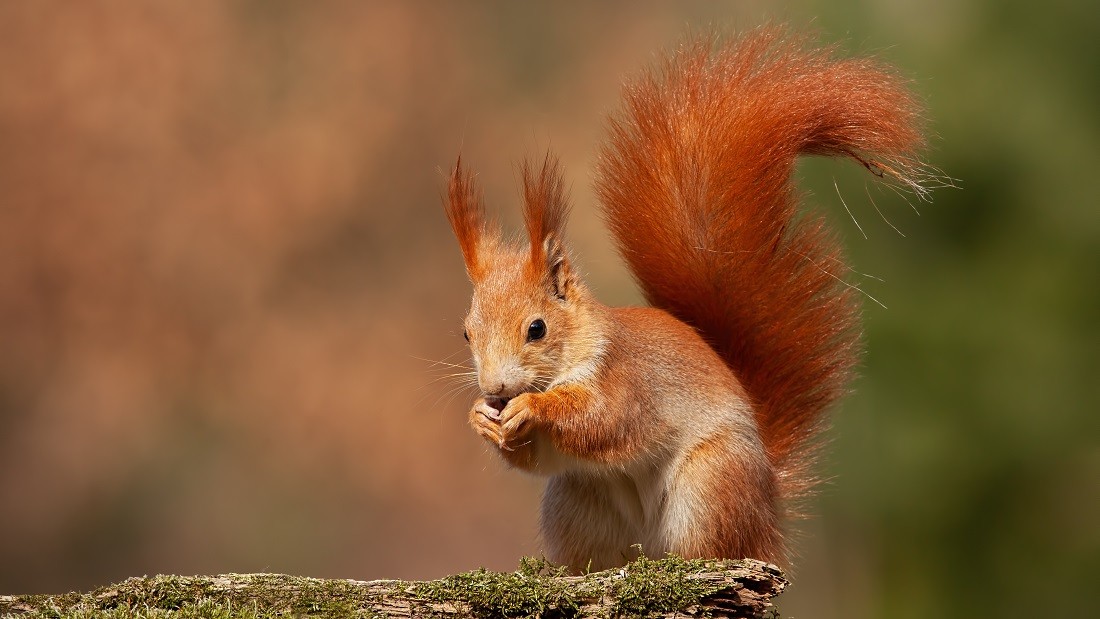
Each recommended way of killing squirrels is as horrific as the next.
Live capture traps leave squirrels struggling to escape until the trapper returns and shoots them.1British Association for Shooting and Conservation. ‘Grey squirrel control.’ BASC. Available at https://basc.org.uk/advice/basc-grey-squirrel-control/ [Accessed 17 July 2020]. It’s recommended that traps are checked daily, but it isn’t a requirement and as a consequence squirrels can be left for days to starve or die of thirst.
When the trapper returns, they will either shoot the squirrel or use the ‘sack method’ – the squirrel is shoved into a sack and beaten to death.1British Association for Shooting and Conservation. ‘Grey squirrel control.’ BASC. Available at https://basc.org.uk/advice/basc-grey-squirrel-control/ [Accessed 17 July 2020]. This barbaric bludgeoning of gentle, inquisitive animals is common.
Spring traps don’t necessarily kill the squirrel immediately but can cause a slow and painful death.1British Association for Shooting and Conservation. ‘Grey squirrel control.’ BASC. Available at https://basc.org.uk/advice/basc-grey-squirrel-control/ [Accessed 17 July 2020]. The trap may catch a squirrel only on their leg or shoulder, leaving them trapped and left to die of thirst, blood loss or starvation.
With firearms, there is no guideline on what the most effective weapon is, but most hunters use air rifles or pistols so that they avoid regulation by the Firearms Act. There reason why there are no regulations on how to kill grey squirrels is because they have no legal protection.
Killing is allowed even during nursing season when mothers nurture and raise their kittens, who depend upon them for everything.1British Association for Shooting and Conservation. ‘Grey squirrel control.’ BASC. Available at https://basc.org.uk/advice/basc-grey-squirrel-control/ [Accessed 17 July 2020]. Kittens are born blind and are reliant on their mother for food and warmth for two to three months. To kill a mother squirrel during this time, knowing that she has up to eight kittens depending on her, is an atrocious act that leaves the babies to die of starvation.
Drowning squirrels remains a common practice despite being illegal.2Crowley, S.L., Hinchliffe, S.J., McDonald, R.A., 2018. ‘Killing squirrels: Exploring motivations and practices of lethal wildlife management.’ Environment and Planning E: Nature and Space. 26 April. Available at https://ore.exeter.ac.uk/repository/bitstream/handle/10871/32622/Killing%20Squirrels%20Accepted%20Version.pdf?sequence=3&isAllowed=y [Accessed 17 July 2020]. It happens because people know there are no repercussions.
In late winter and early spring when squirrels are nursing in their nests (dreys), hunters use the ‘drey poke’ method.1British Association for Shooting and Conservation. ‘Grey squirrel control.’ BASC. Available at https://basc.org.uk/advice/basc-grey-squirrel-control/ [Accessed 17 July 2020]. One person pokes at the drey with a pole while the other one shoots at any squirrels who run away. Kittens who fall to the ground can be killed by dogs. With ‘pests’, efficiency trumps animal welfare.
Warfarin, a blood-thinning medication that is also used in human heart disease patients, is used when squirrels are found in buildings.1British Association for Shooting and Conservation. ‘Grey squirrel control.’ BASC. Available at https://basc.org.uk/advice/basc-grey-squirrel-control/ [Accessed 17 July 2020]. It is the same method used to kill rats. It causes internal bleeding and it can take days before the squirrel dies of acute anaemia.
Eating Squirrels
There is a growing trend of eating ‘wild meat’ and culled squirrels fall into this category – advertised as ‘cruelty-free’ and sustainable. The claim is that the animal was going to be killed anyway. If it were to become popular, make no mistake, squirrels would be killed directly for the wild meat trade.
Viva! won a campaign to stop individual supermarkets in London, part of the Budgens chain, from selling squirrel meat.
Is the cull helping red squirrel populations?
Culling has not been effective in controlling grey squirrel numbers. In the 1950s, 1.5 million squirrels were killed but recolonisation was extremely rapid.3Harris, S., Soulsbury, C., Iossa, G., 2008. University of Bristol. Available at https://onekindplanet.org/uploads/publications/0811_grey_squirrel_populations.pdf [Accessed 17 July 2020]. There are no public records of how many grey squirrels have been killed but it is likely to be tens of thousands each year (Silverman, 2015). It can result in increased local density, more damage to forests, and an increased spread of disease, much like the culling of badgers.3Harris, S., Soulsbury, C., Iossa, G., 2008. University of Bristol. Available at https://onekindplanet.org/uploads/publications/0811_grey_squirrel_populations.pdf [Accessed 17 July 2020].
A 2008 report by the University of Bristol’s School of Biological Sciences noted that there is very little evidence to support the idea that culling grey squirrels helps reds in any way and that ‘most grey squirrel control is ineffective.’3Harris, S., Soulsbury, C., Iossa, G., 2008. University of Bristol. Available at https://onekindplanet.org/uploads/publications/0811_grey_squirrel_populations.pdf [Accessed 17 July 2020].
Red squirrels are cute and have become the icon for conservationists who campaign against invasive species. The irony is that many red squirrels aren’t even native!1Barkham, P., 2017. ‘Kill them, kill them, kill them’: the volunteer army plotting to wipe out Britain’s grey squirrels.’ The Guardian. 2 June. Available at https://www.theguardian.com/environment/2017/jun/02/kill-them-the-volunteer-army-plotting-to-wipe-out-britains-grey-squirrels [Accessed 17 July 2020]. In the past, Britain has imported European red squirrels to boost numbers.!1Barkham, P., 2017. ‘Kill them, kill them, kill them’: the volunteer army plotting to wipe out Britain’s grey squirrels.’ The Guardian. 2 June. Available at https://www.theguardian.com/environment/2017/jun/02/kill-them-the-volunteer-army-plotting-to-wipe-out-britains-grey-squirrels [Accessed 17 July 2020]. As a species, globally, red squirrels are not in danger of extinction and the ‘conservation’ effort in Britain is of little importance’ – so it follows that the culls of grey squirrels are pointless.2Harris, S., Soulsbury, C., Iossa, G., 2008. University of Bristol. Available at https://onekindplanet.org/uploads/publications/0811_grey_squirrel_populations.pdf [Accessed 17 July 2020].
Red squirrels remain in strongholds across the UK, especially in Scotland. Their main source of food is pinecones, which are found in Scotland’s woodlands while England’s more deciduous environment is far better suited to greys. Red squirrels also are found on the Isle of Wight, where there are no greys. Britain, Italy and Ireland are the only countries in the world to have both greys and red squirrels, while reds are found across Europe. Rather than vilifying grey squirrels, the future for red squirrels lies in regenerating our forests and investing in the squirrel pox vaccine.3Horton, H., 2019. ‘Squirrel vaccination programme now needed as ‘last chance’ to save reds in face of grey threat.’ The Telegraph. 19 August. Available at https://www.telegraph.co.uk/news/2019/08/19/squirrel-vaccination-program-now-needed-last-chance-save-reds/ [Accessed 17 July 2020].
For many people, grey squirrels are one of the few wild mammals that they encounter in urban environments bereft of wildlife. Many of us love to see their graceful bodies weave up and down trees and their bold curiosity as they come running up to us. The so-called harm that they can easily be mitigated without bludgeoning them to death in sacks.
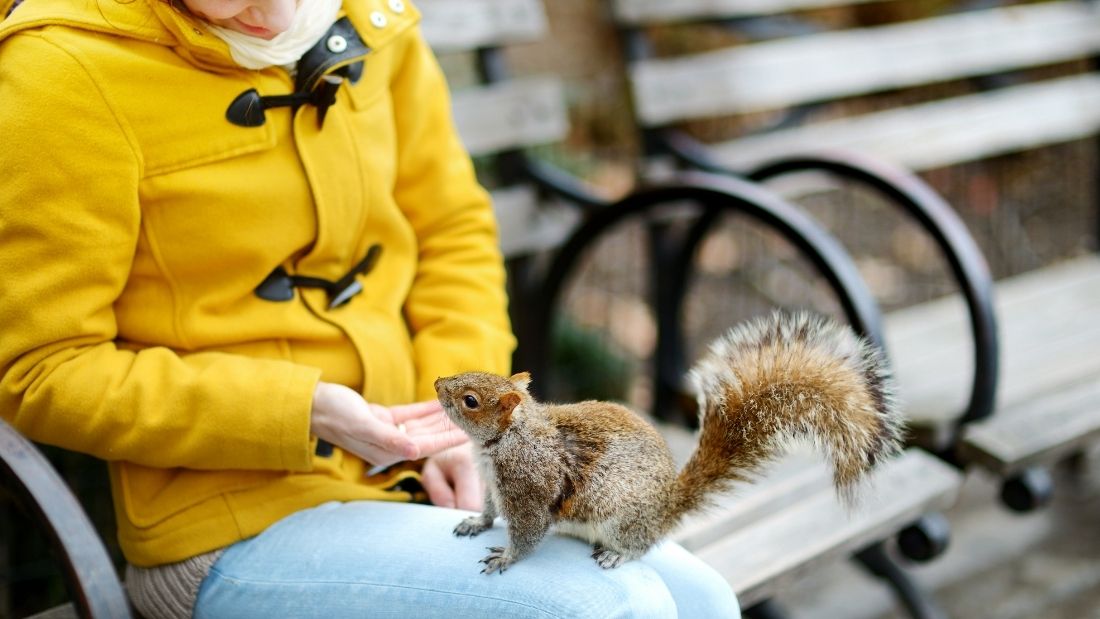
We need to focus on habitat protection and regeneration. Habitat loss is the driving factor for the reduction in many species and money would be better spent on replanting red squirrels’ homelands, which would also benefit our own wellbeing. Forestry design could be altered to suit their dietary needs by planting the right kinds of trees.
The entire islands of Anglesey and the Isle of Wight are established red squirrel zones and this could be extended to other islands.
Developing a vaccine for the squirrel pox would be far more effective than an infinite number of brutal culls and would be a one-off investment, unlike culls which are ongoing.1Horton, H., 2019. ‘Squirrel vaccination programme now needed as ‘last chance’ to save reds in face of grey threat.’ The Telegraph. 19 August. Available at https://www.telegraph.co.uk/news/2019/08/19/squirrel-vaccination-program-now-needed-last-chance-save-reds/ [Accessed 17 July 2020].
Just as we’ve helped struggling songbirds in this country by providing bird feeders and wooden boxes for nests, we can help boost numbers by providing food in the harshest times of the year for red squirrels.
All of these ways help red squirrels unlike killing hundreds of thousands of greys that essentially do nothing to resolve the situation and causes untold misery and pain.

